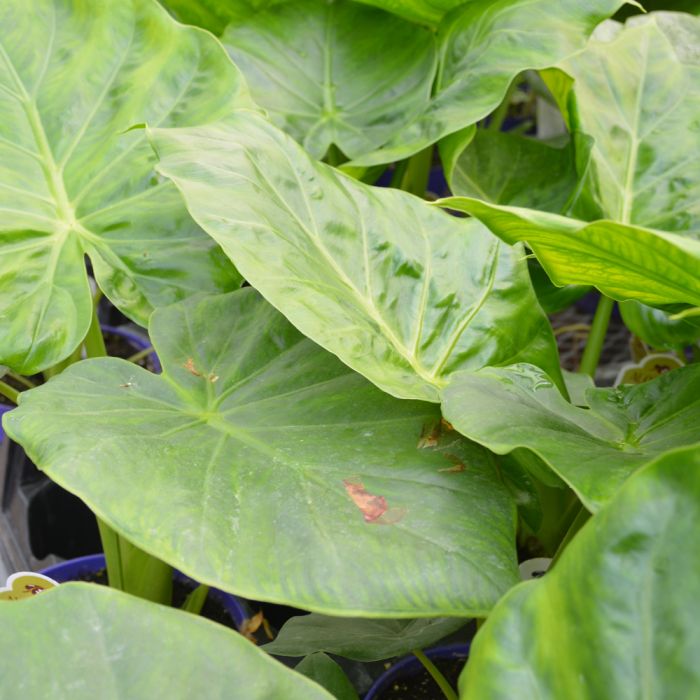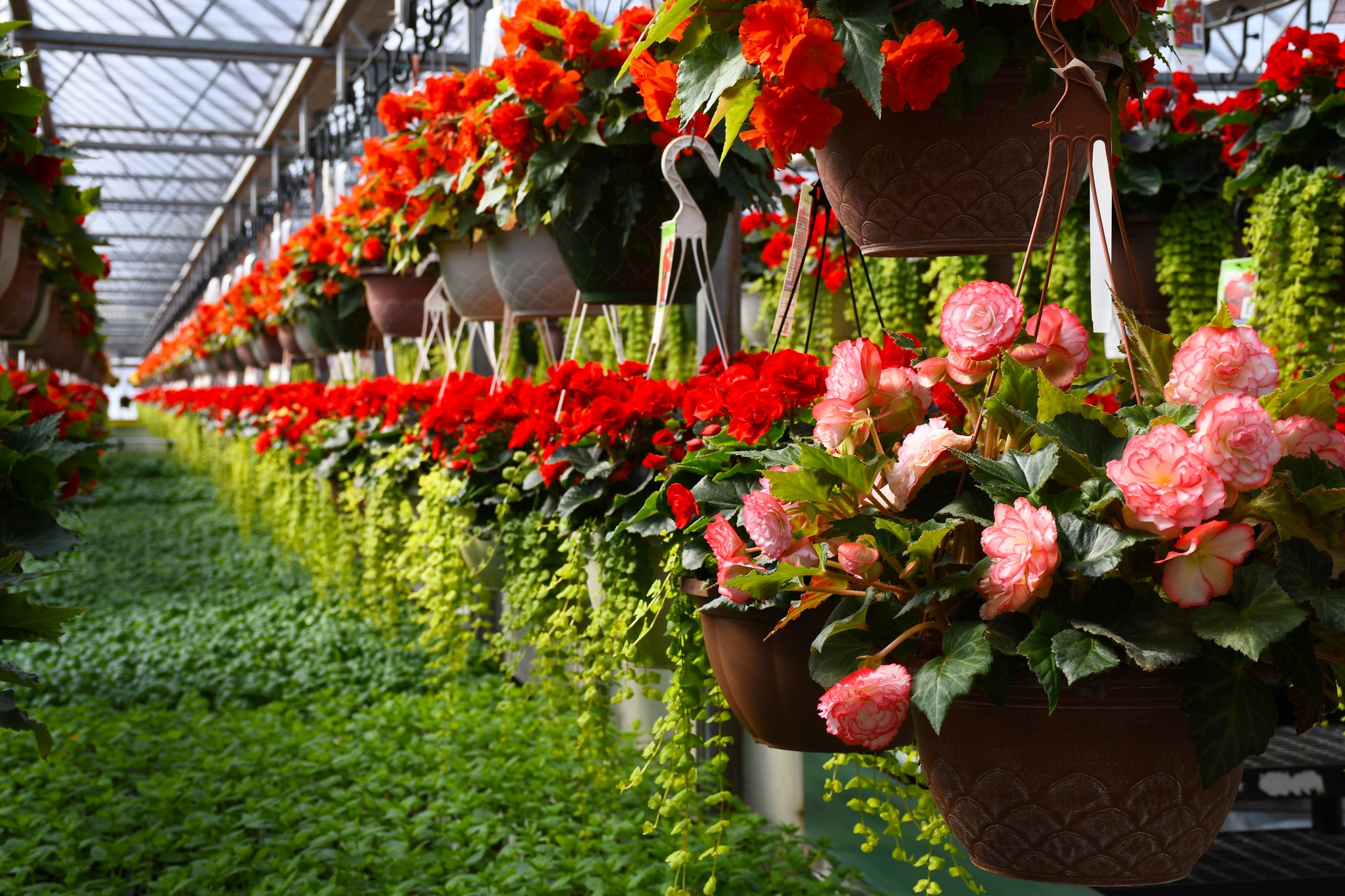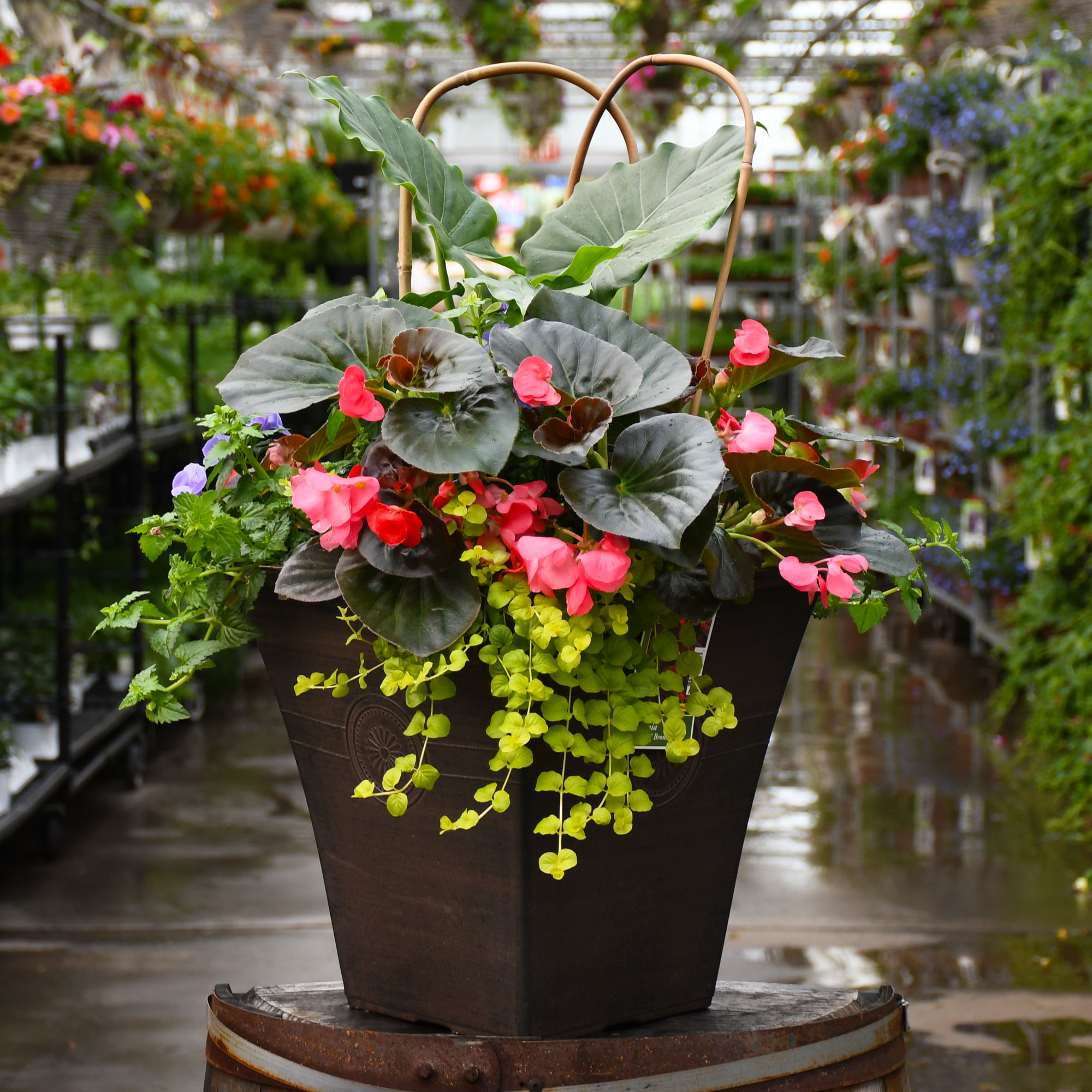Alocasia, Elephant Ear 'Calidora'



Out of stock
Sold out for the season, check back in the Spring!- Sun Preference
- Part-Sun
Description
Calidora Elephant's Ear | Alocasia 'Calidora'
Other Names: Alocasia, Taro
Large and impressive leaves with thick ribs and strong petioles, that emerge in an upright and arching habit, and can reach up to 7 feet; perfect for indoor containers in bright, indirect light.Direct from the Grower
When you see the Gerten Grown logo on our annuals, you know you're getting a fresh plant directly from our greenhouse. We've been perfecting our growing process for over four generations and pride ourselves on providing local quality and freshness to our customers. Better pricing on better quality plant material, that's Gerten Grown.
Details
Calidora Elephant's Ear's attractive enormous crinkled heart-shaped leaves emerge light green, turning bluish-green in color throughout the year on a plant with an upright spreading habit of growth. It features solitary conical powder blue hooded flowers with white centers rising above the foliage in mid summer.
This is an open herbaceous evergreen houseplant with an upright spreading habit of growth. This plant usually looks its best without pruning, although it will tolerate pruning.
When grown indoors, Calidora Elephant's Ear can be expected to grow to be about 7 feet tall at maturity, with a spread of 5 feet. It grows at a medium rate, and under ideal conditions can be expected to live for approximately 5 years. This houseplant should be situated in a location that that gets indirect sunlight at most, although it will usually require a more brightly-lit environment than what artificial indoor lighting alone can provide. It is quite adaptable, prefering to grow in average to wet conditions, and will even tolerate some standing water. The surface of the soil should be kept consistently moist all of the time, and you should expect to water this plant two or more times each week, especially if it's growing in a low-humidity environment. Be aware that your particular watering schedule may vary depending on its location in the room, the pot size, plant size and other conditions; if in doubt, ask one of our experts in the store for advice. It is not particular as to soil pH, but grows best in rich soil. Contact the store for specific recommendations on pre-mixed potting soil for this plant. Be warned that parts of this plant are known to be toxic to humans and animals, so special care should be exercised if growing it around children and pets.
There are many factors that will affect the ultimate height, spread and overall performance of a plant when grown indoors; among them, the size of the pot it's growing in, the amount of light it receives, watering frequency, the pruning regimen and repotting schedule. Use the information described here as a guideline only; individual performance can and will vary. Please contact the store to speak with one of our experts if you are interested in further details concerning recommendations on pot size, watering, pruning, repotting, etc.
-- THIS IS A HOUSEPLANT AND IS NOT MEANT TO SURVIVE THE WINTER OUTDOORS IN OUR CLIMATE --
More Information
| Gerten Grown Plants | Gerten Grown Plants |
|---|---|
| Common Family Name | Elephant Ear |
| Sun Preference | Part-Sun |
| Plant Life Cycle | Annual |
| Mature Height (Range) | 73" + |
| Mature Spread (Range) | Over 36" |


